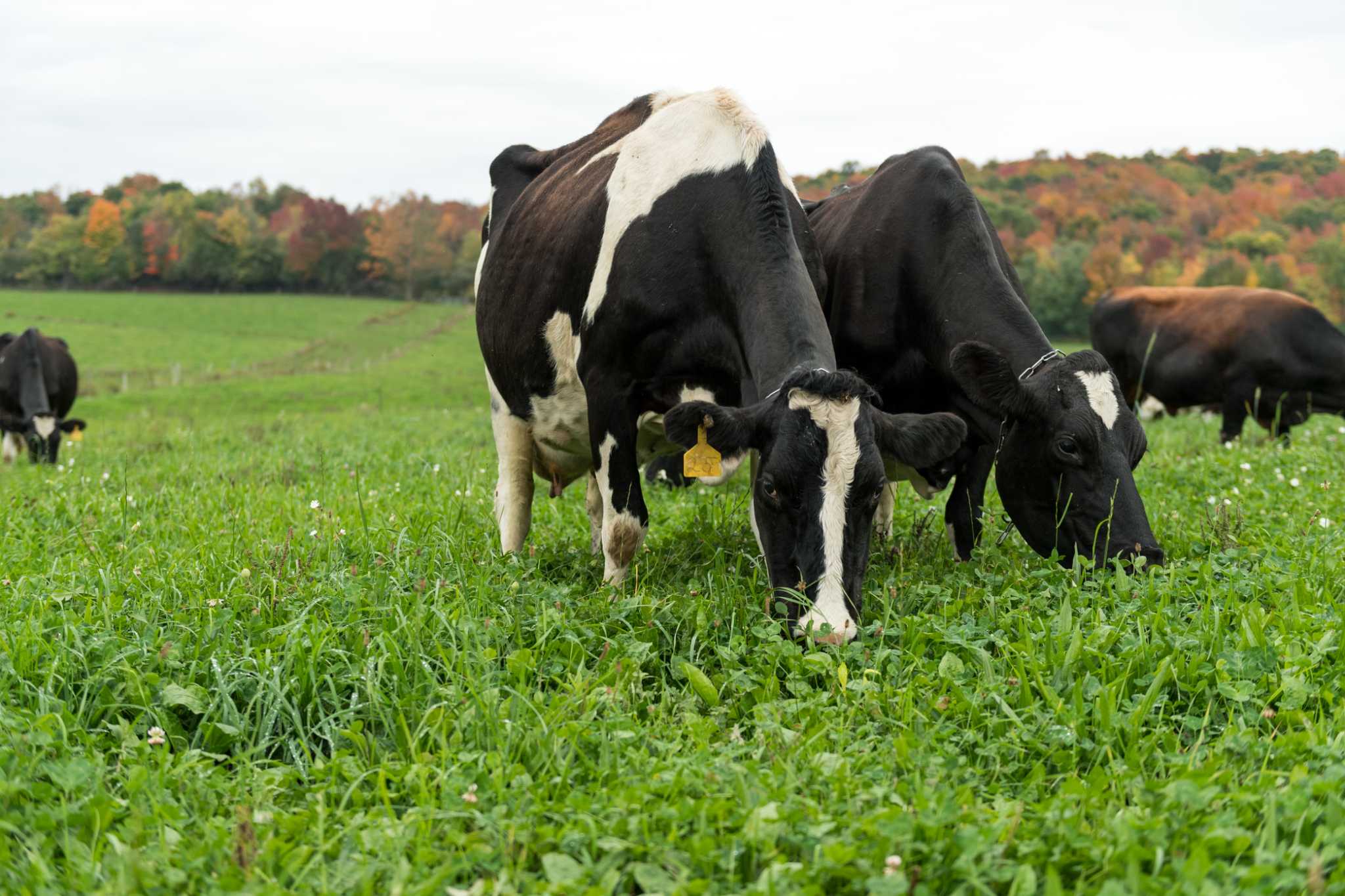Organic Valley farms in New York. The farm’s owner discussed the huge costs associated with switching to all-natural feed for cows – but why he thought it was important to make the switch.
ALBANY – Have you ever gone to the grocery store and noticed organically-labeled products often have higher price tags than the same items without that seal?
They do – but there are reasons for the difference.
Take for instance, some items at a local supermarket.
A pack of two organic cucumbers can cost $3.49. Two, non-organic cucumbers costs $1.36, less than half. Similarly, a two-pint Vanilla La Yogurt had a $2.99 price tag on it during a recent visit. The other organic Stonyfield option was priced at $4.59.
Despite the higher price, the Organic Trade Association reported that organic sales “soared to new highs” in a 2020 survey, leaping up by 12.4 percent to a record $61.9 billion. Organic food alone saw a similar 12.8 percent jump, bringing it to a grand total of $56.4 billion from transactions.
And in 2016, the United States Department of Agriculture pointed to earlier research determining organic price premiums from 2004 to 2010 were “more than 20 percent of the nonorganic price” for 17 commodities it surveyed.
Experts and farmers said the disparity in organic and inorganic costs stems from the difference in farming and production.
Buying an organic product means that you are investing in an item that was created or grown through totally natural processes without chemical or artificial agents, which should not be confused with products that are marketed as “all-natural.”
The “natural” label, according to Organic Valley, an organic food cooperative partnered with several New York farms, “simply means that a food product contains no added color, artificial flavors, or synthetic substances, according to the Food and Drug Administration (FDA).”
“Natural” products aren’t held to a regulated standard as organics are, meaning natural farmers can still use chemical pesticides, synthetics and genetic modifications as part of their practices.
Eric Sheffer, a sixth-generation farmer who sells milk to Stonyfield, became an organic convert in 2014.
Sheffer did away with his conventional methods after considering the switch for years and finding a small window to make the pricey reversal. Transforming the farm into an organic vehicle with crops untouched by chemical fertilizers and other commercial additives such as herbicides and pesticides was a three-year procedure, that is required by the United States Department of Agriculture (USDA).
He said transitioning the land wasn’t as noticeable until the last year when changing the animals’ diet to a fully organic regimen revealed itself as the “real financial stab.”
“The animal transition was just absolutely brutal financially,” he said, emphasizing that the cost for organic grain and additive-free feed doubled and tripled while causing the cows to produce less.
“For a couple (of) hundred cows, you’re looking at a minimum of a half a million dollars to transition,” he noted.
Going organic meant sustaining a “pretty significant” blow in production. He said his cows produced less without the “potent” additives they absorbed in conventional grain. What the farm previously yielded in a couple of hours, now took them about a whole day to produce.
Taking a step back, he pointed out that larger conventional farms can make anywhere from 25,000 to 30,000 pounds of milk a year, but smaller organic operations like his own generate about half of that.
Sheffer, like other organic farmers, also had to account for the annual fees associated with obtaining official certifications from the USDA and state. The amount each farm pays for the designation depends on how large their operations are. Sheffer estimated he pays anywhere from $5,000 to $7,000 a year for the stamp of approval.
Organic Valley said the organic label “isn’t easy to earn,” and explains in part why consumers pay more for those products.
“Farms go through regular inspections and audits to ensure that all standards are still being met over time,” the company said. “Organic is one of the most stringent food certifications in the country, and organic farming is an approach to growing food with nature.”
“Our farms aren’t little widgets in a big factory machine churning out processed food. That higher cost pays for healthier, less ‘artificial’ food on your table,” it added.
Stephen Hadcock, a team leader with the Cornell Cooperative Extension’s Capital Area Agriculture and Horticulture Program, explained that following such comprehensive guidelines, in many ways, potentially leads to less production for organic farmers who rather than rely on machinery, opt to use physical labor that takes longer.
Essentially, dropping a few extra cents or dollars for the organic seal covers farmers’ costs of using more labor and additional expenditures attached to crops’ natural protection. The payoff, Hadcock said, is “philosophical” for farmers who are committed to the morals of letting mother nature provide.
Shayla Colon is a Native New Yorker who previously worked for Hearst CT Media. She now covers business news for the Albany Times Union. When she’s not reporting, find her working out or tucked away in a corner with a book, preferably Hemingway or Fitzgerald.
Here are the reasons why organic food is more expensive – Times Union



